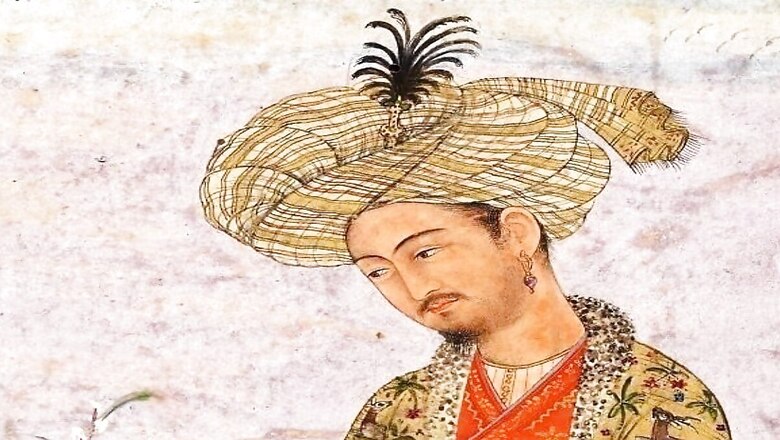
views
It rarely happens that a book of history upsets both the Right and the Left, but a new historian on the block, Aabhas K Maldahiyar, has managed this rare feat. This is a complement to his research and objective writing. It is not easy to write about a king who aroused so much hate for his role in opening the gates of Bharat as no other invader had done.
Others came, conquered some parts of Bharat, and declined – some were assimilated into Bharatiya culture, and some returned while Babur’s dynasty ruled major parts of Bharat for nearly 200 years. Babur’s dynasty is remembered and arouses extreme emotions because it attempted to violently dismantle one of the world’s ancient civilisations in every possible way. The Babri Masjid, built over a magnificent Ram Mandir at Ram’s birthplace by Babur’s commander Mir Baqi, the destruction of Kashi Vishwanath, and the Krishna Janmabhoomi temple—all three being major centres of deep Hindu devotion—are incidents that Bharatiyas cannot forget. These acts were deliberately designed to ensure that Hindus would not forget their humiliation at the hands of invaders. Hindus cannot forget the genocide of unparalleled dimensions, the rapes and enslavement of women and children, and the massive forced conversions.
However, most of us have read the airbrushed history of the great Mughals, revised and rewritten by eminent Marxist historians. They not only glorified the inhuman dynasty of Babur, but also removed much of the history of Hindu resistance to the invaders from the 7th century onwards that prevented any invader from changing the character of this great land. They did not give any space to the glorious Hindu kingdoms of the south, east and northeast. We were left with a sense of inferiority and resentment because collective memories kept alive by folk tales and folk songs refused to die. History written by the historians and courtiers of that time existed; and historians like RC Majumdar and Jadunath Sarkar (just to name the two), could not be destroyed.
However, the myths created by our eminent historians were cemented through school and college education, media controlled by them, and popular cinema that glorified the invaders. The renaissance of Bharatiya writing that began around the year 2000 gained momentum post-2014. Many by-default Leftists also opened their eyes to the reality that had been shut out for years, having been indoctrinated in the myth-making factories of institutions like JNU, AMU, etc.
One of the young thinkers was Aabhas Maldahiyar, an architect by profession who had a reawakening when he visited Ajanta-Ellora, a place that was never promoted the way the Taj Mahal was. And this architect researcher finally decided to write on Timurid history wrongly sold to us as Mughal history. As he read through various translations, he realised that he could not depend on any one of them. So, he learnt Pharsi – the language of the chroniclers of the Timurid dynasty and other invaders.
The research turned out to be so voluminous that Aabhas thought a book or two could not do justice to this critical part of Indian history. Thus, what began as a book on Timurid history is turning into a nine-volume mega set of books being published by a highly reputable publishing house, Penguin, known for its academic rigour.
Aabhas is so committed to objectivity that he devotes several pages to explaining the genealogy of Babur’s dynasty, asserting that Babur was a Timurid who actually hated the Mughals. The Mughals were not only his competitors but also an unreliable clan that caused him significant trouble with their duplicitous games. This is the first myth ably busted by the young writer. This upset the professional Mughal fanboys and girls. Then, as the story develops in the book, it also upsets the Mughal dynasty haters. Because, by calling him “the chessboard king”, they felt he was glorifying Babur.
By compiling and presenting his life and times as told by various historians and his own interpretation, Aabhas seems to have presented a seemingly sympathetic view. It is a fact that Babur had a bad childhood, he suffered one setback after another, but never gave up. He was a family man, unlike the debauch Mughals we know about. He is seen as a typical tribal warlord who generally plays by the tribal playbook – punishing some enemies, killing some cruelly, and forgiving some.
The critics fail to appreciate the fact that the writer has been able to comprehensively tell us that Babur had homosexual inclinations and affairs, and his poetic narrations are quite amusingly feminine. Although he began drinking alcohol at the relatively late age of 30, he eventually became a regular drinker. These black marks on his character do not make him an ideal Islamic hero. But he remains a hero for many Islamists in Bharat who believe they are the progeny of Babur and not of the Bharatiya civilisation.

As the writer approaches the concluding part of his first volume on Babur, he narrates the story of Babur’s first two invasions of Bharat, clearly inspired by his forefather Taimur, after whom his clan is named Timurid by Babur himself. Suddenly, a seemingly courageous and benign warlord becomes a cruel and bloodthirsty invader of Bharat. He mimics Taimur, raising towers of skulls of the defeated and mercilessly killing ‘unclean’ kafir Hindus. He becomes a raging bull who destroys anything in his way and feels proud that he is teaching kafirs a lesson. His dream is to become a Ghazi—a butshikan (destroyer of idols) and killer of kafirs.
In the concluding part of this volume on Babur, Aabhas not only discusses at length the manmade famine that killed nearly 7.4 million Indians while Shah Jahan was building the Taj Mahal, but he also examines the zero or negative growth of Indian GDP during the Timurid period, to prove that India was physically and economically bled by the Timurids (referred to as Mughals by the court historians of independent India).
He demolishes the myth that the ‘Mughals’ settled here, became sons of the soil, and did not take any wealth out of their beloved ‘Hindostan.’ He presents records of donations and loot sent out of India to the Arab lands (including Mecca) and Persia. The transfer of wealth was so significant that people in Mecca would gather in huge numbers in anticipation when there was news about the caravan of donations reaching Mecca.
Aabhas introduces the framework of the history he is going to present. The alarm bells of the leftist historians begin ringing by the time the first volume comes to an end. But the dissatisfied Right seems to have missed the point. It is obvious that the coming volumes will be as objective as the first volume. It is also clear that they will describe at length the plunder of Bharat in every possible way by Babur’s dynasts. He tells us that he has estimated three volumes on Akbar and his so-called secular life that earned him the title of ‘Akbar the Great’. That should worry the Mughal courtiers.
I am all agog. In the coming few years, we will have a comprehensive objective history gleaned from primary sources, not from a history guide to another colleague in the history department. If some people feel offended that some parts of history show the invaders in a soft glow, so be it. We have to accept what went wrong with us and what went right. Why could our well-armed and valorous kings not throw back Timurids as they did in the case of many other invaders, and what are our weaknesses? Why did Timurids survive and thrive despite so many weaknesses? We also need to know how much did they damage our society, our civilisation, our Hindu dharma and why a noble civilisation was bruised too badly by barbaric invaders with little science and knowledge on their side, and no moral compass.
I am sure, this exercise in ‘rewriting’ Mughal, nay Timurid history, will give us a set of history books that will help us understand our history and invaders’ deeds, and appreciate our ability to keep rising back from the worst setbacks to keep our civilisational flag flying and not allowing our Dharmic civilisations to die the way other civilisations perished under the Islamic sword.
The writer is a well-known author and political commentator. He has written several books on RSS like RSS 360, Sangh & Swaraj, RSS: Evolution from an Organisation to a Movement, Conflict Resolution: The RSS Way, and done a PhD on RSS. Views expressed in the above piece are personal and solely those of the author. They do not necessarily reflect News18’s views.


















Comments
0 comment